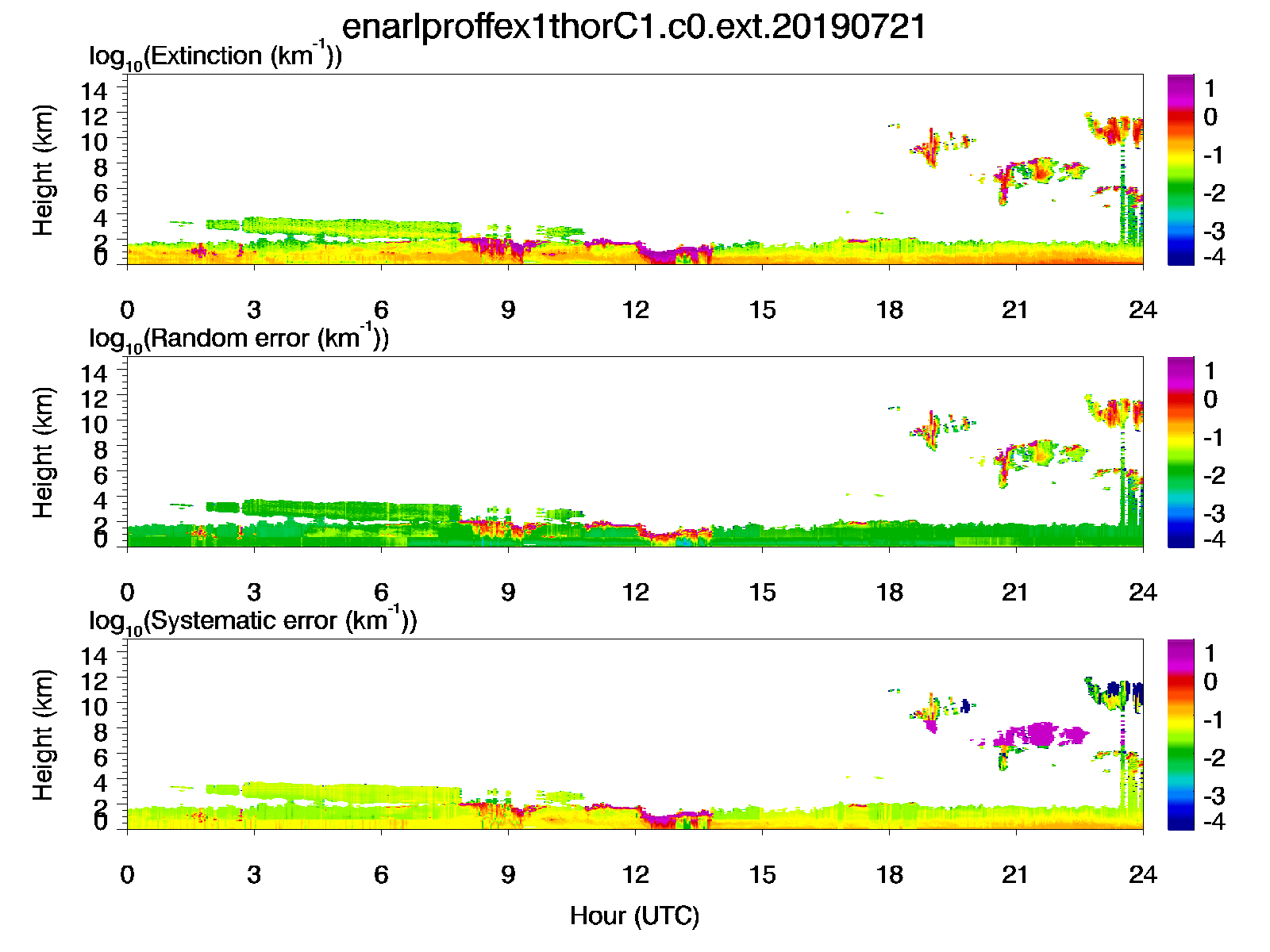Raman Lidar Profiles Value-Added Product Moves to Production
Published: 20 January 2020

Gaps in our understanding of aerosols and their interactions and influence on clouds are among the main sources of energy balance uncertainties. To reduce these uncertainties in earth system models, continuous height-resolved measurements of cloud and aerosol optical properties are needed. Now in production, the Raman Lidar Profiles – Feature detection and Extinction (RLPROF-FEX) value-added product (VAP) provides height- and time-resolved estimates of cloud and aerosol optical properties.
RLPROF-FEX provides estimates of aerosol and cloud extinction, backscatter, and vertical and horizontal depolarizations using the FEX algorithm described by Thorsen et al. (2015), Thorsen and Fu (2015), and Chand et al. (2019). The VAP provides a particulate feature mask that separates aerosol from cloud. This mask segregates the clouds into liquid and ice types. The ice cloud types further divide into horizontally and vertically oriented layers of ice crystals within the cloud. These features can also be used to detect the physical location of the aerosol and cloud layers vertically.
Scientists can use the output from RLPROF-FEX for process studies, climatology development, instrument intercomparison studies, and model validation.
Chand et al. (2019) describes the FEX algorithm, its input and output data, and related details about the Atmospheric Radiation Measurement (ARM) user facility’s Raman lidar system.
RLPROF-FEX recently moved to production for ARM’s Eastern North Atlantic and Southern Great Plains atmospheric observatories. Scientists can use the RLPROF-FEX data now. Currently, data from September 2015 to September 2019 are available for the Eastern North Atlantic observatory and from January 2016 to January 2020 for the Southern Great Plains observatory.
Data are available in netCDF format. Feedback on the data format and quality is requested. Please send feedback to Duli Chand.
More information on RLPROF-FEX is available on the VAP web page. To access these data, log in to the ARM Data Center. (Go here to request an account.)
To cite the RLPROF-FEX data, please use doi:10.5439/1373934.
References: Thorsen TJ, Q Fu, RK Newsom, DD Turner, and JM Comstock. 2015. “Automated Retrieval of Cloud and Aerosol Properties from the ARM Raman Lidar. Part I: Feature Detection.” Journal of Atmospheric and Oceanic Technology, 32(11), 10.1175/jtech-d-14-00150.1.
Thorsen TJ and Q Fu. 2015. “Automated Retrieval of Cloud and Aerosol Properties from the ARM Raman Lidar. Part II: Extinction.” Journal of Atmospheric and Oceanic Technology, 32(11), 10.1175/jtech-d-14-00178.1.
Chand D, R Newsom, T Thorsen, E Cromwell, C Sivaraman, C Flynn, J Shilling, and J Comstock. 2019. Aerosol and Cloud Optical Properties from the ARM Raman Lidars: The Feature Detection and Extinction (FEX) Value-Added Product. Ed. by Robert Stafford, ARM user facility. DOE/SC-ARM-TR-224.
Keep up with the Atmospheric Observer
Updates on ARM news, events, and opportunities delivered to your inbox
ARM User Profile
ARM welcomes users from all institutions and nations. A free ARM user account is needed to access ARM data.


















